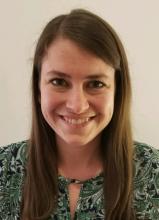CDLP: 4 Takeaways from a CDLP Awardee
CDLP: 4 Takeaways from a CDLP Awardee

During the fall of 2019 I was at a pivotal point in my career trajectory. I had just started my pre-doctoral internship year and was preparing to apply for post-doctoral positions – a last step in my training as I pursued a career in research. So, when I learned about ADAA’s Alies Muskin Career Development Leadership Award Program (CDLP) and its focus on providing early career researchers and clinicians with intensive mentoring and professional development opportunities, I knew I wanted to apply. Although I was excited for the opportunities provided by the CDLP, I was unsure what exactly the program entailed, what the mentorship looked like, and how I would benefit. I was fortunate enough to be selected as a research track 2020/2021 CDLP awardee, and below are some of the aspects of CDLP that I found the most impactful.
- Individual Mentorship. As a CDLP awardee, one of the major benefits is the individual mentorship you receive from a senior ADAA member. I was matched with a senior researcher with similar interests to my own, with whom I met individually to discuss my short- and long-term goals. It was incredibly helpful to discuss and get feedback as I applied to postdocs in 2020 and prepared my first federal grant in 2021. Another thing I greatly appreciated was hearing about my mentor’s own career trajectory and prioritization of their work-life balance. My mentor’s dedication to providing me with a rich mentee experience was evident and she was exceedingly open to discussing the professional, logistical, and personal decision points that go into setting the course of one’s career path. Overall, this one-on-one mentorship experience was one of the highlights of the CDLP program for me.
- Small-Group Mentorship. In addition to being paired with an individual mentor, awardees also receive mentorship within smaller breakout groups during the pre-conference day of CDLP programming. Within the research track, these small groups included both senior ADAA members and other CDLP awardees with similar interests. There were multiple aspects of the breakout groups that made this aspect of the CDLP programming so helpful. First, each awardee presented on a research project and received feedback from the group. At the time I participated in the CDLP, I was preparing to submit my first federal grant and decided to present my specific aims. It was so helpful to get advice, feedback, and encouragement about my project from both the senior ADAA members and other CDLP awardees. Another thing I appreciated about my breakout group was that although all awardees were early career researchers, we varied in our career stages, which means that we each came in with our own unique experiences and perspectives. Watching everyone’s presentations and talking to the other awardees, this diversity in experience was particularly helpful as I received insight into what the next stages of my career may look like as I look ahead towards a career as an independent researcher.
- ADAA Registration and Membership. Another great benefit of completing the CDLP is the complementary ADAA membership and conference registration. I have been a member of ADAA since the spring of 2014, when I presented my first independent research project as a poster at the Chicago conference. Even from the beginning, I have loved the networking and professional benefits of attending the annual conference each year. Not only does the annual conference allow me to present and receive feedback on my own research, but it allows me to stay up-to-date with the cutting edge research being conducted by leaders in our field. Furthermore, outside of the presentations themselves, ADAA provides several networking opportunities for early career members, such as the Early Career Professionals and Students SIG Luncheon. I would highly recommend the ADAA conference to anyone with a clinical or research interest in depression and anxiety.
- Other Benefits. Beyond these highlights, there were many other benefits to the CDLP program. For example, in addition to the mentorship break-out groups, the CDLP programming for the research track also included presentations on forging a successful career in academia and a panel on federal funding opportunities for early career researchers. The CDLP was also a great opportunity for networking, as I got to meet several senior and early-career researchers in my field. Finally, thanks to the CDLP, I was able to attend the ACNP conference, which was a conference I would have not had access to otherwise, as attendance typically requires sponsorship from an active member.
In sum, the mentorship and benefits provided by the CDLP are fantastic professional development opportunities. My takeaway from participating in the CDLP? If you are an early career researcher or clinician who is wondering whether the CDLP would benefit you – apply!












